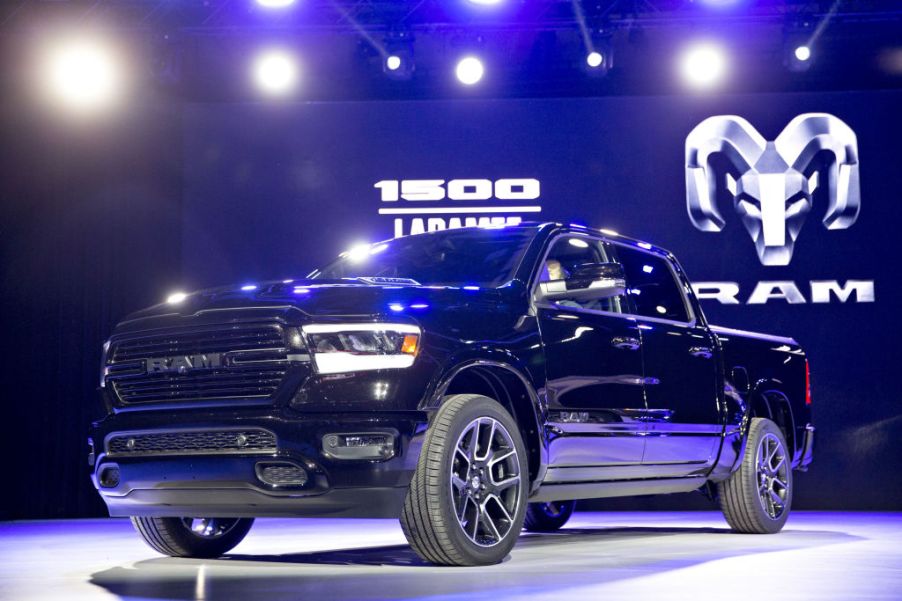
Maybe Ram Trucks Aren’t Catching up to Ford as Fast as We Thought
The battle for sales among the ‘Big Three’ trucks continues this year, even though it seems that Ford might be winning the war. Earlier this year we watched Ram rumble past the Chevrolet Silverado on its way to chasing down the Ford F-Series. But is Ram closing the gap as rapidly on Ford as it did on Chevrolet? Perhaps not, as recent truck sales numbers provide a few, but not all, clues.

Inside Ram’s sale numbers
The year 2019 started off with the F-Series in a leading position with 70,596 trucks sold in January. Chevy sold 37,603 Silverados, and Ram sold 34,889 of its pickups. The remainder of the first quarter showed Ram to be inching ahead of Chevy, while Ford held its first-place position.
F-Series sales remained strong in the second quarter with May being an especially good month with 87,670 trucks sold. Ram pickup sales also performed very well that month selling 62,250 units, 13,144 more than April. Ram almost closed the sales gap in June with 68,098 trucks sold, compared to Ford’s 70,136.
But that was as close as Ram was able to get in catching up to Ford in truck sales this year. The third quarter revealed that Ram not only fell far behind the Blue Oval but also barely stayed ahead of Chevy.
August was a peak month for truck sales with a total of 301,348 sold and highlighted these changes. Buyers went home with 78,907 F-Series trucks, 59,550 Ram pickups, and 57,283 Silverados.
September sales numbers were disappointing for Ram as it sold 15,900 fewer trucks than Ford, with 48,916 and 64,816 units respectively.
Reasons why Ram still can’t quite catch Ford
It should be no surprise that Ford has had a solid grip on the U.S. truck market for 42 years. For example, the manufacturer sold over 900,000 F-Series trucks in 2018. The longevity of the F-Series as the country’s best-selling full-size pickup has been challenged by Ram’s more recent inroads, however.
With hopes to make a dent in Ford’s dominance, Ram has released the new Ram 1500 and also offered last year’s version, the Ram 1500 Classic. This strategy has worked relatively well for Ram, resulting in a 13.8% increase in sales from Q3 2018 to Q3 2019. But it still hasn’t managed to outstrip Ford in truck sales this year.
Pricing is one aspect where Ford maintains its edge, at least at the lower trim levels. Buyers can get a base-model F-150 XL for $28,155. The base trim Ram Tradesman costs $3,500 more.
At the high end of the trucks’ trim level, buyers will pay more for the F-Series with an F-150 Limited starting at $67,135. On the other hand, the equally luxurious Ram 1500 Limited, the top trim level for the truck, starts at $55,485.
Ford has also offered some aggressive incentives across its lineup this year, which has been a big draw for buyers in general. For example, it offered discounts of $1,000 for a Super Duty in May and up to $6,500 for the F-150 in August.
It’s possible that these discounts account for the upticks in F-Series sales during these months. For its part, Ram has offered 0% financing over 36 months and a May cashback deal that gives buyers up to $3,500 back for the Tradesman and up to $5,000 for the mid-level Big Horn or Lone Star trim.
The F-Series’ seven trim levels over Ram’s six may be a plus for Ford. But the broad range of choices among Ford’s seven truck engine options may have even greater buyer appeal, while Ram has only three. Having such a variety of selections for buyers with specific needs and wants could give Ford an edge over Ram.
Ford also seems to have got the message that trucks continue to make up more and more of an automaker’s sales. By 2021, it will have jettisoned production of all of its passenger cars to focus on the truck and SUVs segments. As it stands, the F-Series accounted for 38.8% of all Ford sales in Q3, up from 38% in Q1.
With the recent introduction of a new class-exclusive light-duty diesel truck that is available at the XLT level, the manufacturer continues to keep the bar high for its competitors. It’s likely that Ram and GM will follow suit with its own version of a light-duty diesel.
Ford has a new 2020 Super Duty coming out with a 7.3-liter gas V8 engine. It has re-engineered its Power Stroke diesel that seems at least as impressive as the Ram’s updated Cummins. It also will launch a next-generation F-150, as well as a hybrid F-150, for the 2021 model year.
So, in the near term, it looks as if the folks at Ram will have to rustle up a game-changer or two to catch up with Ford.


